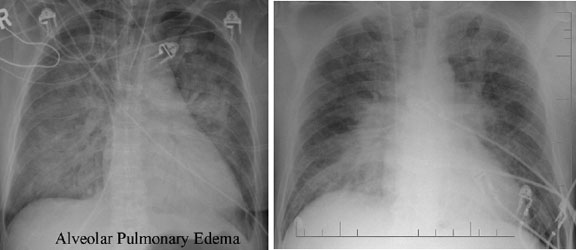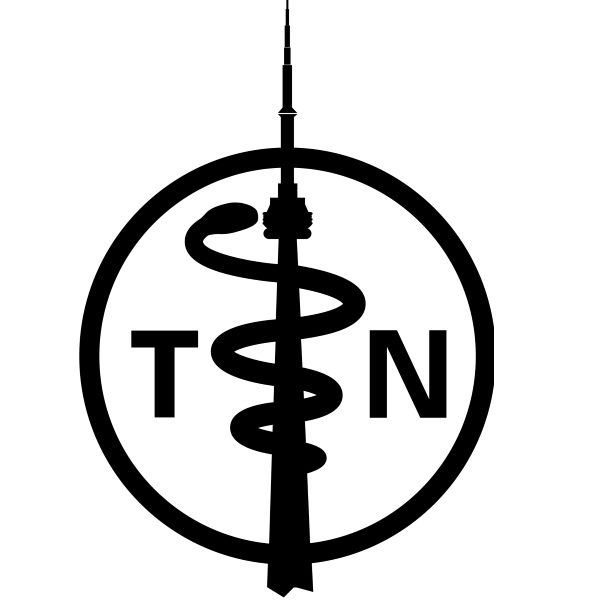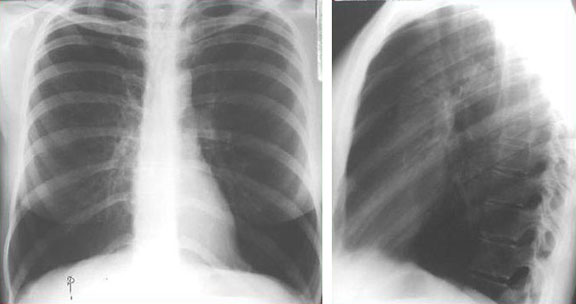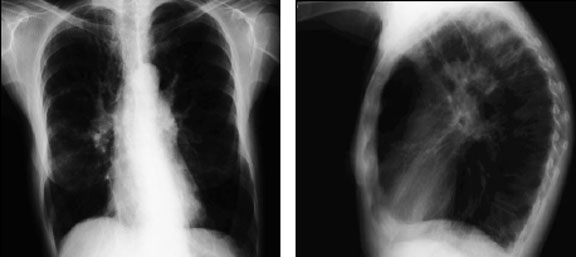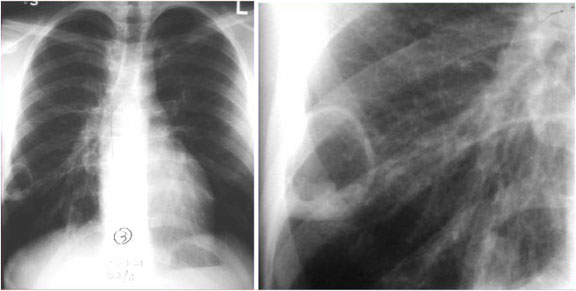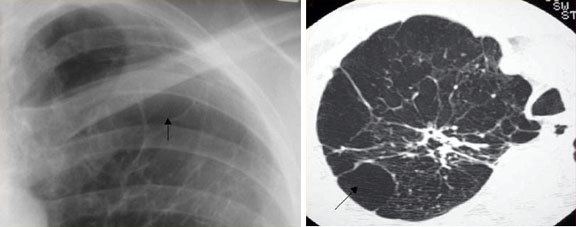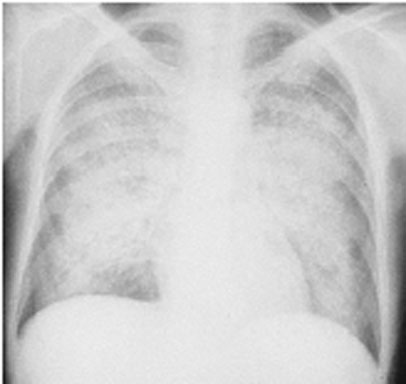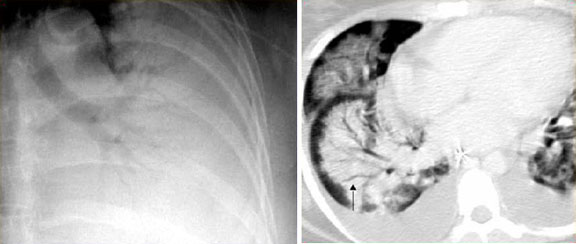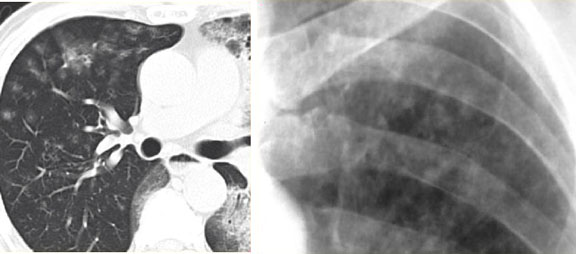Pulmonary Edema
The plain AP films of this patient exemplify pulmonary edema. One can easily appreciate the fluffy white opacities throughout the lung field. Other signs such as vascular redistribution, peri-bronchial cuffing, and pleural effusion are difficult to appreciate on this study. However, Kerley B lines are seen, especially in the lower right lung field.
